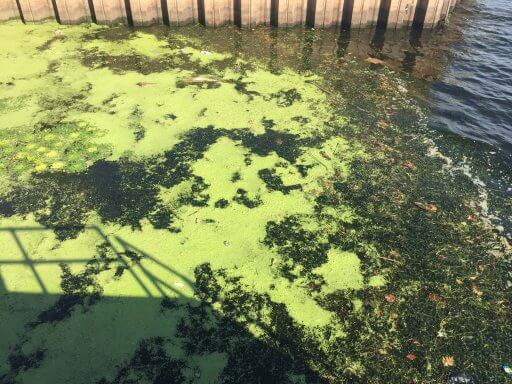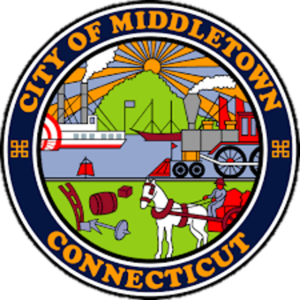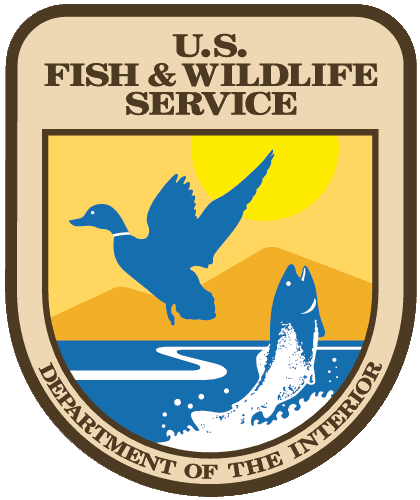What is Hydrilla?
Hydrilla (hydrilla verticillata) is an invasive aquatic species that was first identified in the Connecticut River in 2016 in Glastonbury, CT. Three years later, 2019 and 2020, the Connecticut Agriculture Experiment Station (CAES) surveyed the Connecticut River from Agawam, MA to the Long Island Sound, reporting at least 774 acres of hydrilla. See CAES map of invasive plants here.
Hydrilla can outcompete native species and, as a result, replace habitat for sensitive species, including migratory fish. In recent years, thick mats of hydrilla have crowded out boaters, anglers and those who come to recreate on the Connecticut River. Marinas and municipalities have reported that they can no longer access boat slips and docks due to the severity of the hydrilla infestations, limiting business opportunity.

Image by Connecticut Agriculture Experiment Station
How Hydrilla Spreads
Hydrilla in the Connecticut River is of particular concern for several reasons. Hydrilla propagates through fragmentation, meaning that when it breaks apart, fragments of the plant may float downriver and re-root, creating another mat of hydrilla at a new location. The hydrilla in the Connecticut River is also different than any other species of hydrilla found, as it does not have tubers on the roots of the plant, as is usual for hydrilla. Because hydrilla spreads through fragmentation, when paddlers, boaters and wildlife become entangled in hydrilla, they can spread the plant to reaches downriver. Additionally, when boaters move from water body to waterbody, hydrilla fragments can remain in or on the vessel and be introduced to new waterbodies that way.

What’s Being Done?
Connecticut River Conservancy has been working with municipalities, nonprofit groups, government agencies, businesses, boaters and individuals to address the threat of hydrilla. A group of stakeholders has collaboratively written a 5 Year Management Plan to be updated on an annual basis with appropriate modifications. To learn more about the collaboration around hydrilla, watch this short documentary. An Executive Summary of the 12-Town Environmental Review Team Report conducted by Connecticut Resource Conservation & Development can be found here.
In 2021, CRC received funding to pilot the installation of benthic barriers to suppress hydrilla growth, and work with experts to understand various treatment options. In partnership with CAES, CRC drafted a report on the success and challenges of using benthic barriers and what managers should consider when weighing this option. Read the full report here.
In 2021 and 2022 CRC and its partners worked to advocate for federal funding to study and treat the magnitude of hydrilla in the watershed. This successful effort resulted in the U.S. Army Corps of Engineers engagement in the project. The project will investigate hydrilla’s growth patterns, water exchange dynamics in the CT River, and evaluate herbicide efficacy in laboratory conditions in 2023 to guide operational scale field demonstrations of herbicide efficacy in 2024. Read more on the USACE website here.
In 2022 CRC further tested the efficacy of benthic barrier at another site in the Connecticut River and had similar successes at both sites. Read the full report here.
In 2023, CRC continues to develop a community based social marketing strategy to engage boaters in the “clean, drain and dry” practice to prevent the spread of hydrilla. Learn more about our progress to date and our next steps. We are also collaborating with the U.S. Army Corps of Engineers New England district for a demonstration project to determine the effectiveness of herbicides registered for aquatic use by the U.S. Environmental Protection Agency (EPA) to safely reduce and control the spread of the Connecticut River hydrilla.
Ultimately, controlling hydrilla in the Connecticut River will be a multimillion-dollar project which will require not only treatment, but outreach and education to all those who recreate on the Connecticut River. Finally, CRC is working with state and federal legislators to advocate for funding and comprehensive management of hydrilla.
What Can You Do?
The first step to slowing the spread of hydrilla is to learn about aquatic invasive species and share information with friends, family and neighbors who visit the river. When you see hydrilla in the river, avoid the infestation as much as possible so that it does not further fragment and spread. If you see hydrilla north of Agawam, MA be sure to report it to CRC or the appropriate state agency.
Finally, as you travel between water bodies, it is imperative that everyone cleans, drains and then dries their boats – this applies to kayaks, canoes, jet skis power boats and trailers. As the age old saying goes — “An ounce of prevention is worth a pound of cure.”

Recognizing Partners





